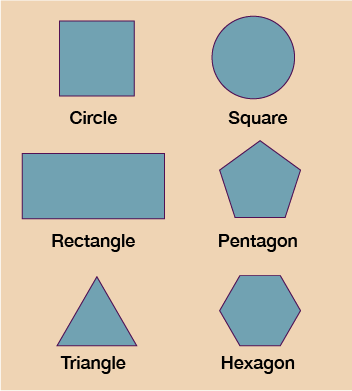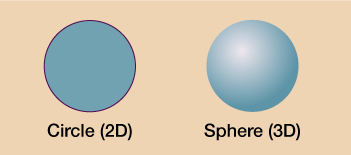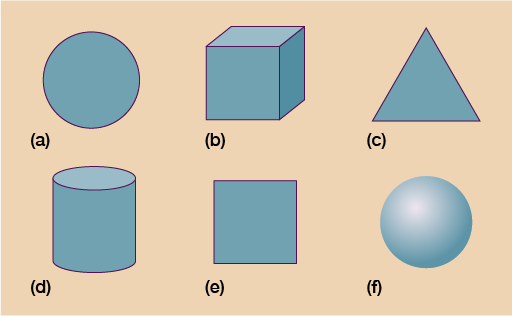1.3 2D and 3D shapes
‘2D’, or ‘two-dimensional’, simply means that the shape is flat. We can draw 2D shapes on paper. Common examples are shown in Figure 5.
A ‘3D’ (‘three-dimensional’) shape is a solid shape. It has three dimensions, that is, length, width and depth. An easy way of thinking about the difference between a 2D and a 3D shape is to think ‘If I shone a torch on the shape, would it have a shadow?’ 3D shapes cast a shadow but 2D shapes don’t.
Obviously the screen that you’re reading this on is 2D, so 3D shapes are represented using shading.



